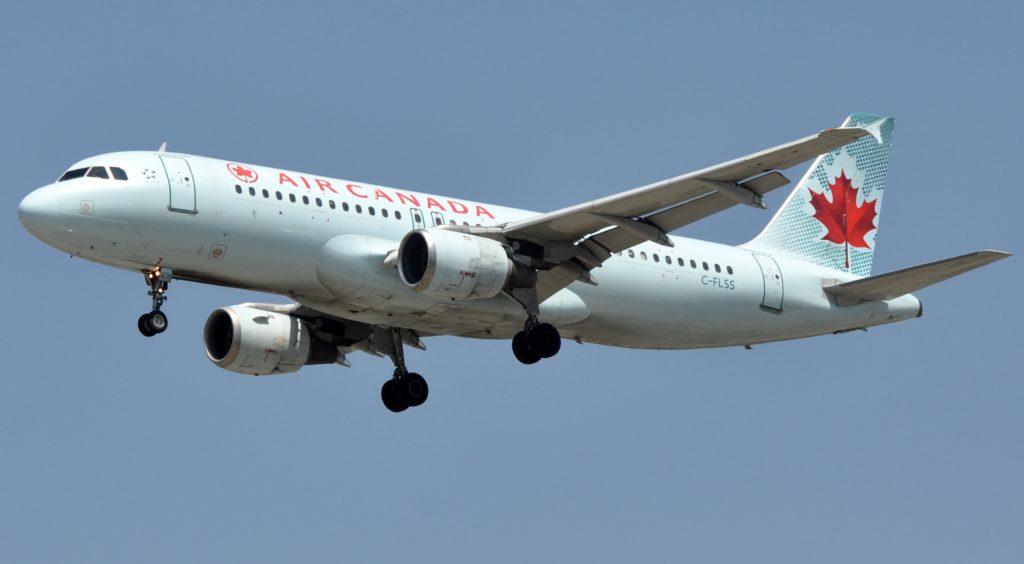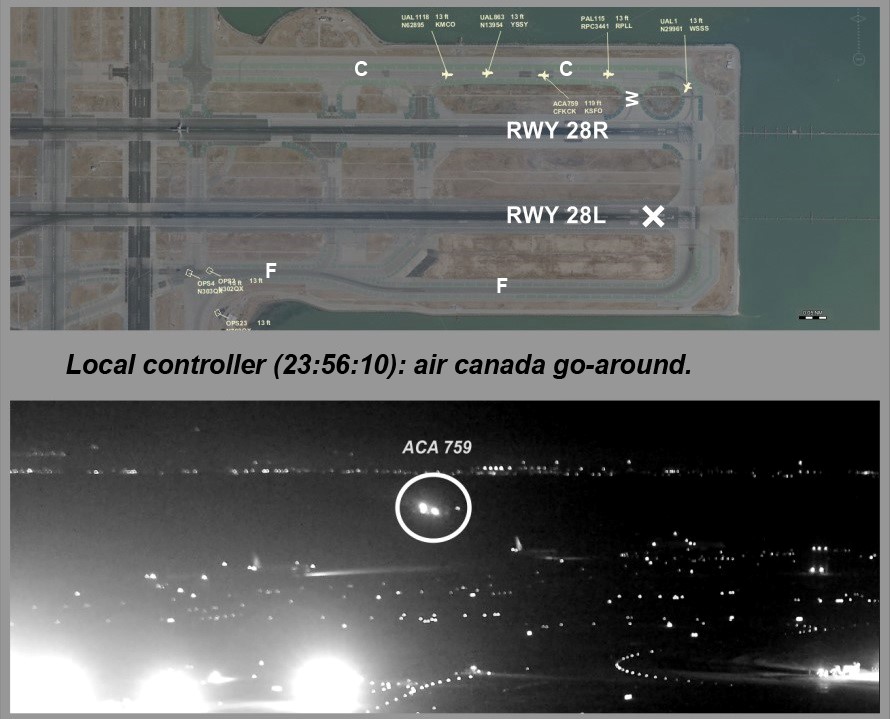Estimated reading time 9 minutes, 40 seconds.
U.S. officials are urging Transport Canada to change regulations affecting pilot fatigue in the wake of an Air Canada flight that came dangerously close to colliding with other aircraft on the ground at San Francisco International Airport in 2017.

An investigation report from the U.S. National Transportation Safety Board (NTSB) makes the recommendation following an incident that saw an Air Canada airliner dip to an altitude of about 60 feet after mistaking a taxiway for a runway.
“At the time of the incident, the captain had been awake for more than 19 hours, and the first officer had been awake for more than 12 hours,” the report said.
“Thus, the captain and the first officer were fatigued during the incident flight.”
The Air Canada Pilots Association (ACPA) issued a press release Wednesday endorsing NTSB recommendations that call on the Canadian government to “fix its outdated fatigue regulations.”
Transport Canada is in the midst of a regulatory review that is contemplating an adjustment to maximum flight and duty times for pilots, after industry consultation.
There is support for regulation changes in many corners of the industry, but some have criticized the changes as a one-size-fits-all approach that do not reflect the practical concerns of smaller operators.
Transport Canada is planning to publish its final regulations in Canada Gazette, Part II, before the end of 2018, a spokesperson said in an email to Skies.
“We have done extensive consultation and we have to address all of the spectrum of the airline world from big airplanes to small airplanes,” said Transport Minister Marc Garneau outside the House of Commons on Sept. 26, 2018.
“We are very satisfied that we have come up with modern regulations that address safety. If the regulations that we are proposing had been adopted, had been in effect in 2017 the captain of that airplane would not have been allowed to fly on that extended duty day. These are going to come out soon. We believe that these modern regulations address based on the best science available the issue of pilot fatigue. We’re confident that we have done extensive consultations on this matter.”
The NTSB is recommending regulation changes to address “the potential for fatigue” for pilots on reserve duty who are called to operate evening flights that would extend into the pilots’ window of circadian low.
NEAR-MISS
The Air Canada flight in question was an Airbus A320-211, inbound from Toronto Pearson at around 11:56 p.m. Pacific time on July 7, 2017, according to the NTSB report.
It was cleared to land on runway 28R at San Francisco International Airport (SFO) but instead lined up with parallel taxiway C, the report said.
Four airliners–a Boeing 787, an Airbus A340, another Boeing 787, and a Boeing 737–were on taxiway C awaiting clearance to take off from runway 28R.
The incident aircraft descended to an altitude of 100 feet above ground level and overflew the first aircraft on the taxiway, the report said. The incident flight crew initiated a go-around, and the airplane reached a minimum altitude of about 60 feet and overflew the second plane on the taxiway before starting to climb.
None of the five flight crewmembers and 135 passengers aboard the Air Canada flight were injured, and the aircraft was not damaged, the report said.
CONFUSION
The flight crew had recent experience flying into SFO at night and was likely expecting the airport to be in its usual configuration, according to the report.
But on the night in question, SFO parallel runway 28L was scheduled to be closed at 11 p.m. Pacific time.

The crewmembers received a flight release, which included a notice to airmen (NOTAM) about the runway 28L closure, according to the report.
However, the first officer said he could not recall reviewing the specific NOTAM that addressed the runway closure, according to the report.
The captain said he saw the runway closure information, “but his actions (as the pilot flying) in aligning the airplane with taxiway C instead of 28R demonstrated that he did not recall that information when it was needed,” the report said.
Crewmembers also reviewed automatic terminal information system (ATIS) information Quebec during the flight, which also included NOTAM information about the runway 28L closure, according to the report.
“Both crewmembers recalled reviewing ATIS information Quebec but could not recall reviewing the specific NOTAM that described the runway closure,” the report said.
CRISIS
Procedures for the approach to runway 28R required the first officer to manually tune the instrument landing system (ILS) frequency for runway 28R, which would provide backup lateral guidance to supplement visual approach procedures, the report said.
In this case first officer missed this step when he set up the approach, and the captain did not notice that the ILS frequency had not been entered, the report said.
According to the report, the captain said as the aircraft approached the airport, he thought he saw runway lights for runway 28L.
As a result, the captain believed runway 28R was runway 28L, and believed taxiway C was runway 28R.
The controller confirmed runway 28R was clear, but flight crewmembers were unable to reconcile their confusion about the “perceived lights on the runway,” which were in fact lights from airplanes on taxiway C, with the controller’s assurance the runway was clear, according to the report.
“Neither flight crewmember recognized that the airplane was not aligned with the intended landing runway until the airplane was over the airport surface, at which time the flight crew initiated a low-altitude go-around,” the report said.
“According to the captain, the first officer called for a go-around at the same time as the captain initiated the manoeuvre, thereby preventing a collision between the incident airplane and one or more airplanes on the taxiway.”
CONFIRMATION BIAS
While multiple cues were available to distinguish runway 28R from taxiway C, the NTSB found there were also sufficient cues to confirm the crew’s expectation the aircraft was aligned with the intended landing runway.
These included the general outline of airplane lights in a straight line on taxiway C and the presence of runway approach lights on runway 28R, “which would also have been present on runway 28L when open,” the report said.
“As a result, once the airplane was aligned with what the flight crewmembers thought was the correct landing surface, they were likely not strongly considering contradictory information,” the report said.
“The cues available to the flight crew to indicate that the airplane was aligned with a taxiway did not overcome the crew’s belief, as a result of expectation bias, that the taxiway was the intended landing runway.”
FATIGUE
The flight crew reported starting to feel tired just after they navigated through an area of thunderstorms, which radar data indicates was around 9:45 p.m. Pacific time (12:45 a.m. Eastern time), according to the NTSB.
But the incident took place at around 11:56 p.m. Pacific time (2:56 a.m. Eastern time), and as a result part of the incident flight occurred during a time when the flight crew would normally have been asleep, according to post-incident interviews.
It also took place at a time that approximates the start of the human circadian low period described in Air Canada’s fatigue information, according to the NTSB report.
While the flight crew’s work schedule for the incident flight complied with applicable Canadian flight time limitations and rest requirements, the flight and duty time and rest requirements for the captain–a company reserve pilot–would not have complied with U.S. requirements, said the report.
Fatigue likely contributed to the crewmembers’ misidentification of the intended landing surface, their ongoing expectation bias, and their delayed decision to go around, said the NTSB.
In addition to its recommendation about fatigue for reserve pilots, the NTSB made several suggestions to the U.S. Federal Aviation Administration (FAA), including requiring aircraft landing at certain airports to be equipped with a system that alerts pilots when the aircraft is not aligned with a runway surface.
– With files from Ken Pole








